Preface
Introduction
RISC-V Hardware Platform Terminology
RISC-V Privileged Software Stack Terminology
Privilege Levels
Debug Mode
Control and Status Registers (CSRs)
CSR Address Mapping Conventions
CSR Listing
CSR Field Specifications
Machine-Level ISA, version 1.10
Machine-Level CSRs
Machine ISA Register misa
Machine Vendor ID Register mvendorid
Machine Architecture ID Register marchid
Machine Implementation ID Register mimpid
Hart ID Register mhartid
Machine Status Register (mstatus)
Privilege and Global Interrupt-Enable Stack in mstatus register
Base ISA Control in mstatus Register
Memory Privilege in mstatus Register
Virtualization Support in mstatus Register
Extension Context Status in mstatus Register
Machine Trap-Vector Base-Address Register (mtvec)
Machine Trap Delegation Registers (medeleg and mideleg)
Machine Interrupt Registers (mip and mie)
Machine Timer Registers (mtime and mtimecmp)
Hardware Performance Monitor
Counter-Enable Registers ([m|h|s]counteren)
Machine Scratch Register (mscratch)
Machine Exception Program Counter (mepc)
Machine Cause Register (mcause)
Machine Trap Value (mtval) Register
Machine-Mode Privileged Instructions
Environment Call and Breakpoint
Trap-Return Instructions
Wait for Interrupt
Reset
Non-Maskable Interrupts
Physical Memory Attributes
Main Memory versus I/O versus Empty Regions
Supported Access Type PMAs
Atomicity PMAs
Memory-Ordering PMAs
Coherence and Cacheability PMAs
Idempotency PMAs
Physical Memory Protection
Physical Memory Protection CSRs
Supervisor-Level ISA, Version 1.10
Supervisor CSRs
Supervisor Status Register (sstatus)
Base ISA Control in sstatus Register
Memory Privilege in sstatus Register
Supervisor Trap Vector Base Address Register (stvec)
Supervisor Interrupt Registers (sip and sie)
Supervisor Timers and Performance Counters
Counter-Enable Register (scounteren)
Supervisor Scratch Register (sscratch)
Supervisor Exception Program Counter (sepc)
Supervisor Cause Register (scause)
Supervisor Trap Value (stval) Register
Supervisor Address Translation and Protection (satp) Register
Supervisor Instructions
Supervisor Memory-Management Fence Instruction
Sv32: Page-Based 32-bit Virtual-Memory Systems
Addressing and Memory Protection
Virtual Address Translation Process
Sv39: Page-Based 39-bit Virtual-Memory System
Addressing and Memory Protection
Sv48: Page-Based 48-bit Virtual-Memory System
Addressing and Memory Protection
Hypervisor Extensions, Version 0.0
RISC-V Privileged Instruction Set Listings
Platform-Level Interrupt Controller (PLIC)
PLIC Overview
Interrupt Sources
Local Interrupt Sources
Global Interrupt Sources
Interrupt Targets and Hart Contexts
Interrupt Gateways
Interrupt Identifiers (IDs)
Interrupt Priorities
Interrupt Enables
Interrupt Priority Thresholds
Interrupt Notifications
Interrupt Claims
Interrupt Completion
Interrupt Flow
PLIC Core Specification
Controlling Access to the PLIC
Machine Configuration Description
Configuration String Search Procedure
History
Research Funding at UC Berkeley
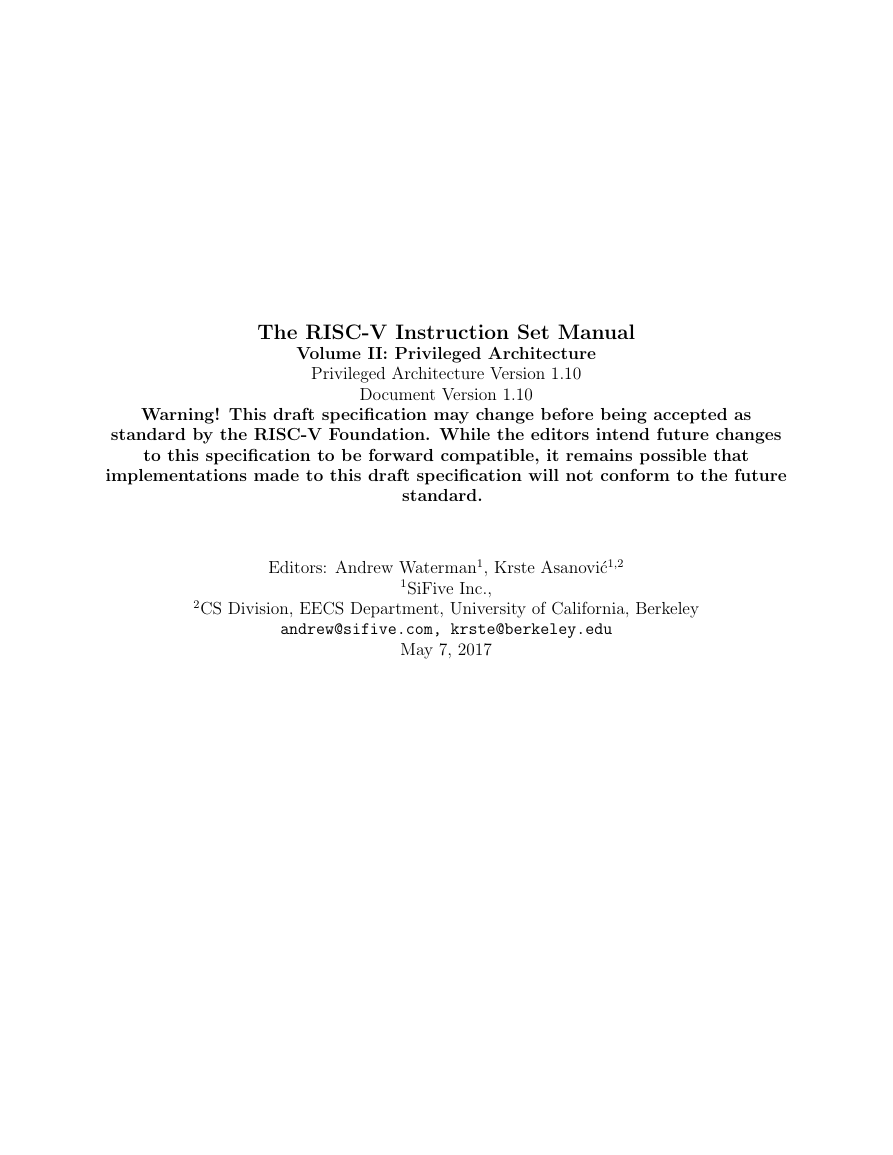
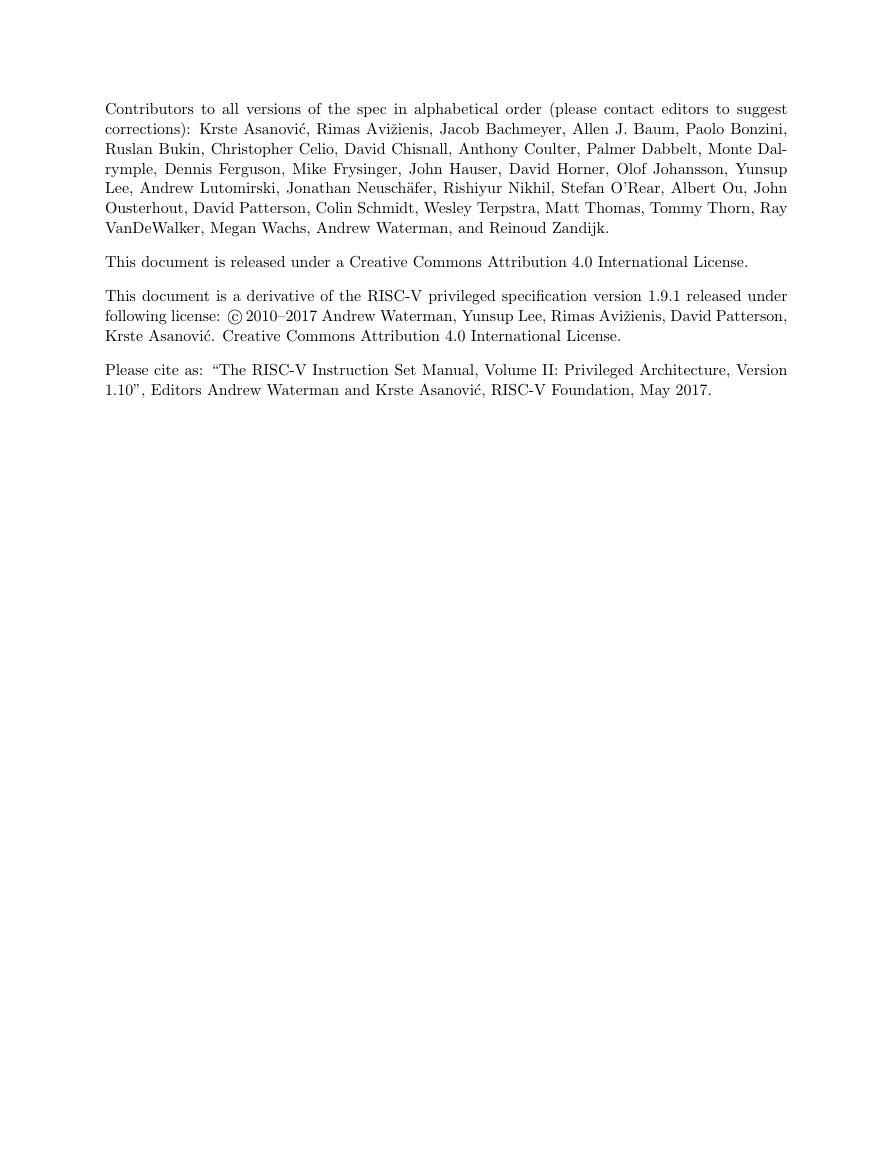
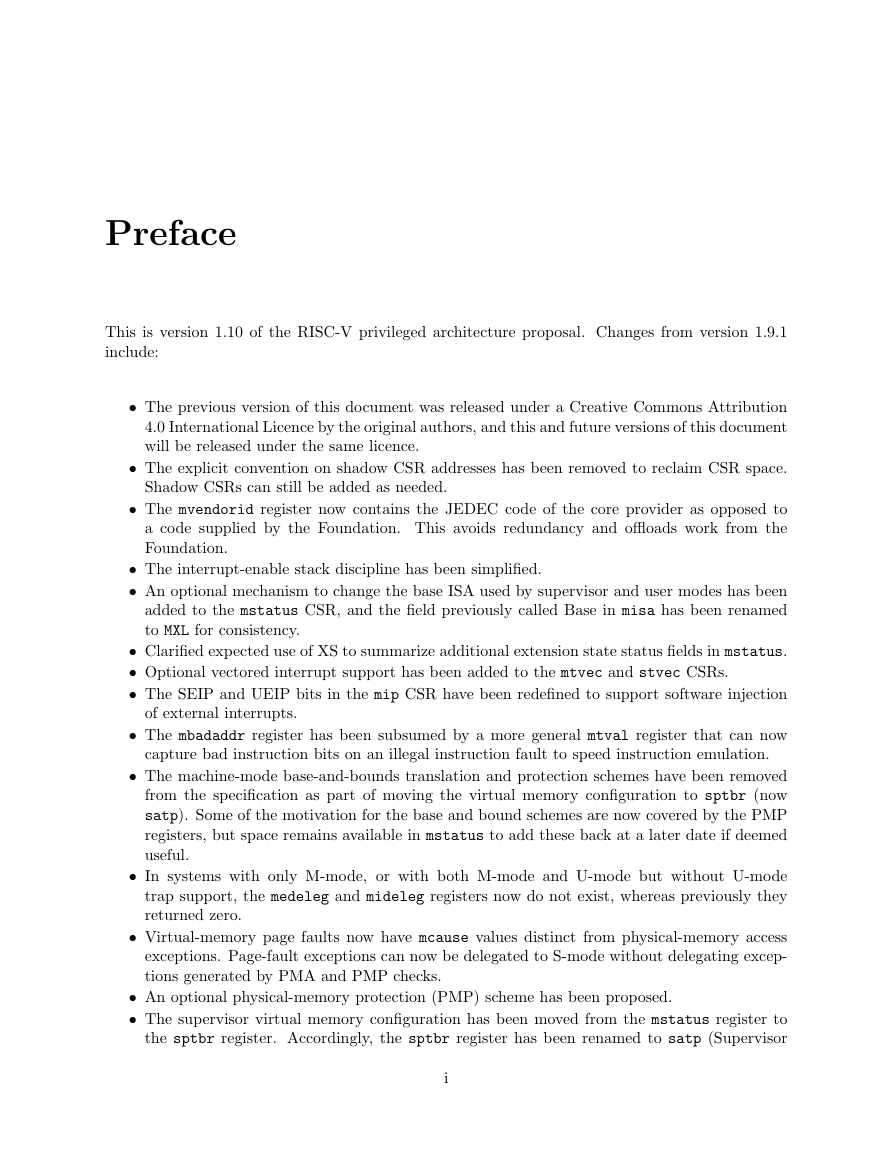
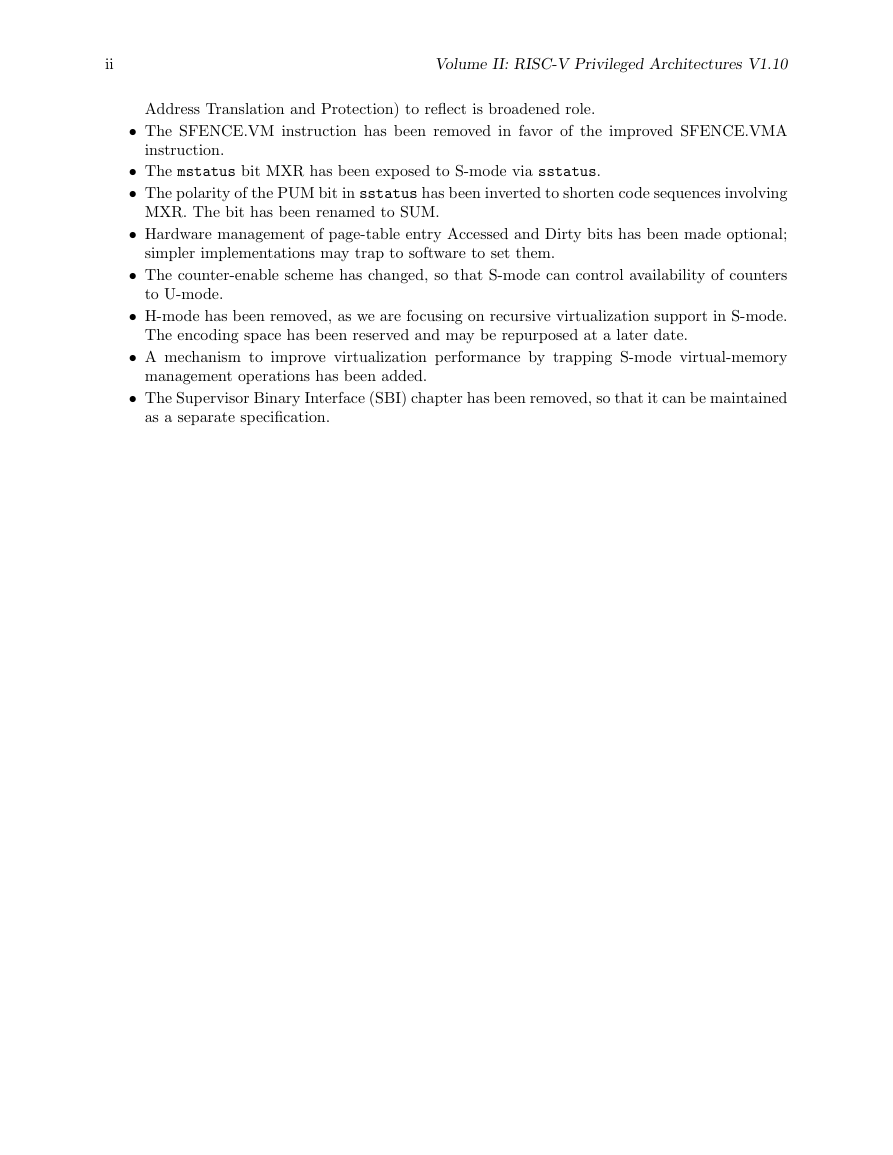
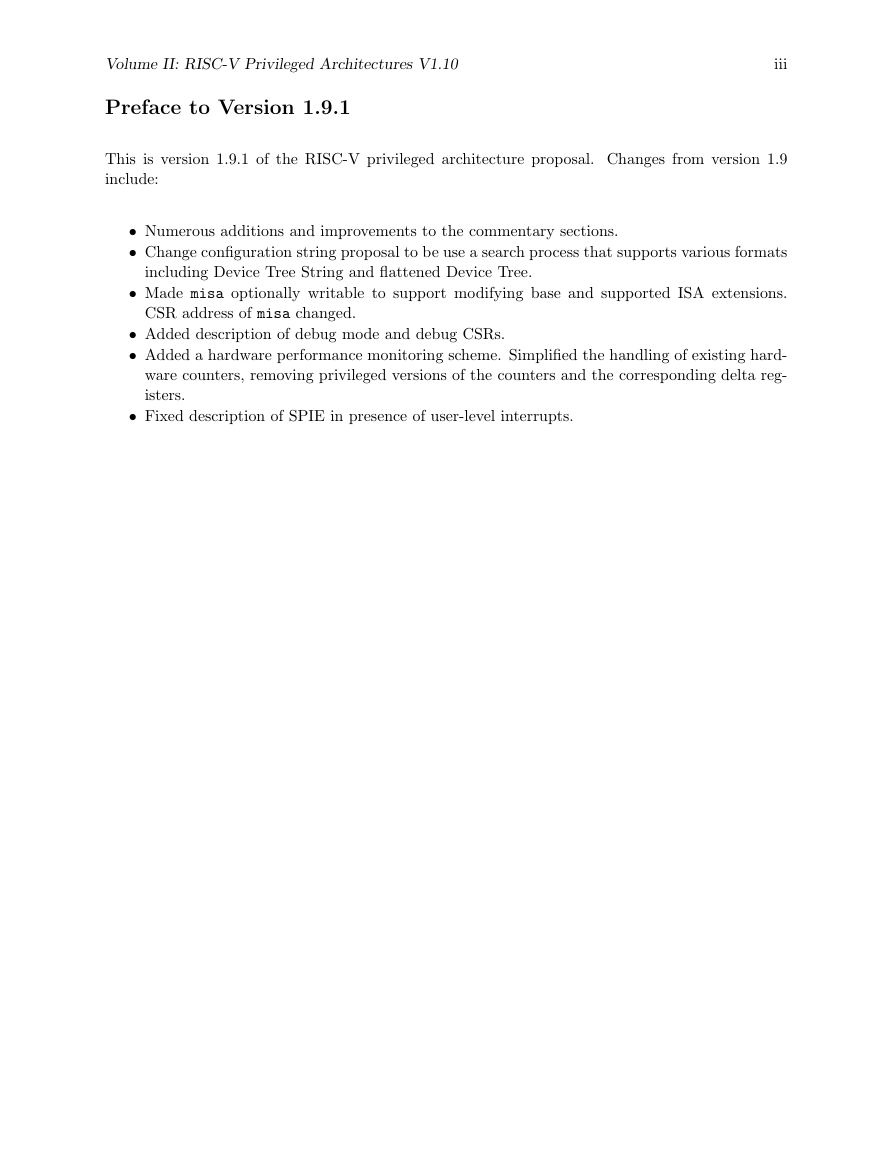

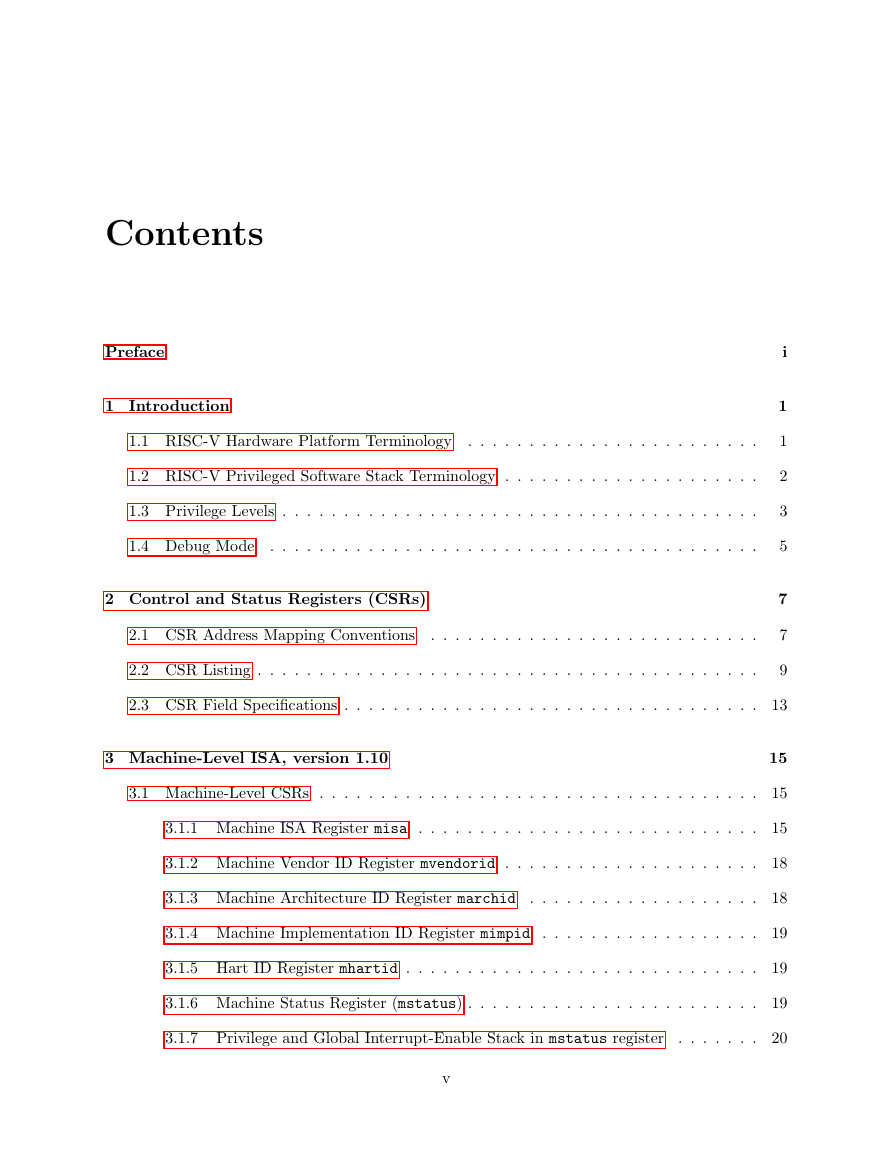
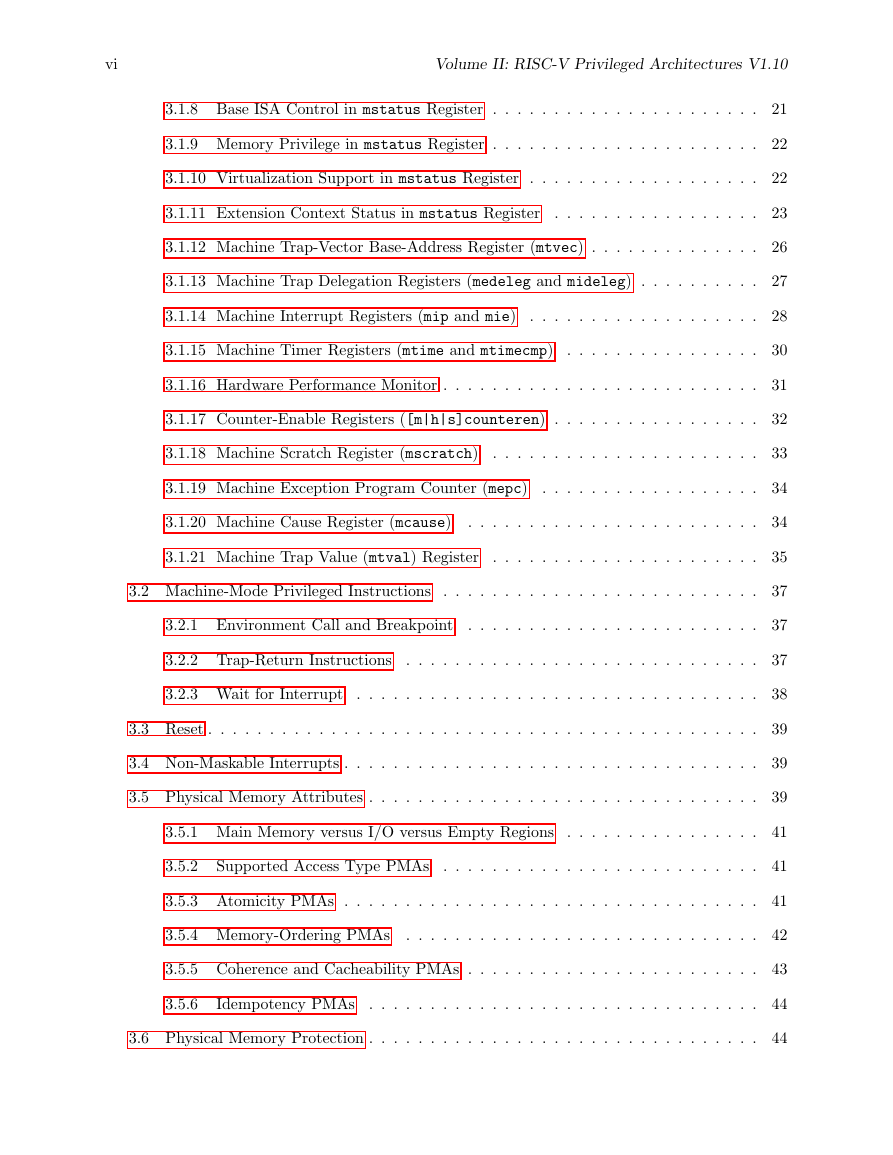








 2023年江西萍乡中考道德与法治真题及答案.doc
2023年江西萍乡中考道德与法治真题及答案.doc 2012年重庆南川中考生物真题及答案.doc
2012年重庆南川中考生物真题及答案.doc 2013年江西师范大学地理学综合及文艺理论基础考研真题.doc
2013年江西师范大学地理学综合及文艺理论基础考研真题.doc 2020年四川甘孜小升初语文真题及答案I卷.doc
2020年四川甘孜小升初语文真题及答案I卷.doc 2020年注册岩土工程师专业基础考试真题及答案.doc
2020年注册岩土工程师专业基础考试真题及答案.doc 2023-2024学年福建省厦门市九年级上学期数学月考试题及答案.doc
2023-2024学年福建省厦门市九年级上学期数学月考试题及答案.doc 2021-2022学年辽宁省沈阳市大东区九年级上学期语文期末试题及答案.doc
2021-2022学年辽宁省沈阳市大东区九年级上学期语文期末试题及答案.doc 2022-2023学年北京东城区初三第一学期物理期末试卷及答案.doc
2022-2023学年北京东城区初三第一学期物理期末试卷及答案.doc 2018上半年江西教师资格初中地理学科知识与教学能力真题及答案.doc
2018上半年江西教师资格初中地理学科知识与教学能力真题及答案.doc 2012年河北国家公务员申论考试真题及答案-省级.doc
2012年河北国家公务员申论考试真题及答案-省级.doc 2020-2021学年江苏省扬州市江都区邵樊片九年级上学期数学第一次质量检测试题及答案.doc
2020-2021学年江苏省扬州市江都区邵樊片九年级上学期数学第一次质量检测试题及答案.doc 2022下半年黑龙江教师资格证中学综合素质真题及答案.doc
2022下半年黑龙江教师资格证中学综合素质真题及答案.doc